
|

|
|||
About Playful ThinkingThe Playful Thinking series from MIT Press publishes engaging and visually compelling volumes on game-related topics, authored by both scholars and industry luminaries, that are easily accessible to academics, professionals, and laymen from a broad range of backgrounds and levels of experience. Each volume ranges between 25,000-30,000 words (approximately 100 pages) in length, is small enough to be easily thrown in a backpack or a coat pocket, and is written in a way that is accessible and compelling to academics, professionals, and educated readers in general. The series' focus can be summed up as follows:
Sample topics may include video games and art, video games and architecture, video games and music, the history of video games, video games and fairy tales, etc. HistoryThe Playful Thinking Series began in 2012, sparked by discussions and research being conducted at the MIT Game Lab (then the Singapore-MIT GAMBIT Game Lab), a research group at the MIT Comparative Media Studies program. |
||||
Upcoming Books |
||||
The Rule Book: The Building Blocks of Gamesby Jaako Stenros and Markus Montola How games are built on the foundations of rules, and how rules – of which there are only five kinds – really work. Board games to sports, digital games to party games, gambling to role-playing games. They all share one thing in common: rules. Indeed, rules are the one and only thing game scholars agree is central to games. But what, in fact, are rules? In The Rule Book, Jaakko Stenros and Markus Montola explore how different kinds of rules work as building blocks of games. Rules are constraints placed on us while we play, carving a limited possibility space for us. They also inject meaning into our play: without rules there is no queen in chess, no ball in Pong, and no hole in one in golf. Stenros and Montola discuss how rules constitute games through five foundational types: the explicit statements listed in the official rules, the private limitations and goals players place on themselves, the social and cultural norms that guide gameplay, the external regulation the surrounding society places on playing, and the material embodiments of rules. Depending on the game, rules can be formal, internal, social, external, or material. By considering the similarities and differences of wildly different games and rules within a shared theoretical framework, The Rule Book renders all games more legible. About the Authors Markus Montola has published several books on role-playing, pervasive games, and larp, and has worked as a lead designer on mobile games such as Shadow Cities, The Walking Dead: Our World, and most recently Friends & Dragons. He is a cofounder of the mobile game studio Playsome. |
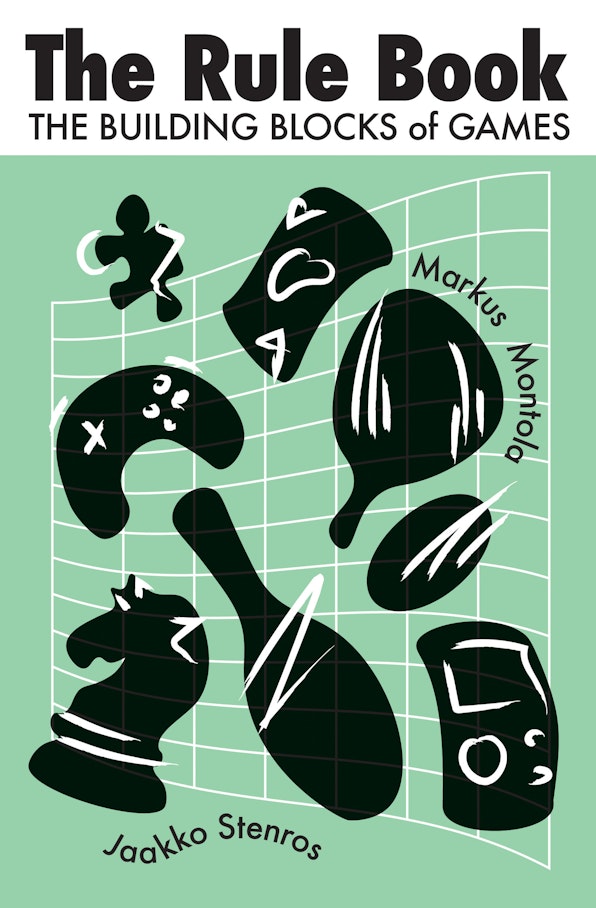
Paperback $40.00 |
|||
Current Books |
||||
Run and Jump: The Meaning of the 2D Platformerby Peter D. McDonald How abstract design decisions in 2D platform games create rich worlds of meaning for players. Since the 1980s, 2D platform games have captivated their audiences. Whether the player scrambles up the ladders in Donkey Kong or leaps atop an impossibly tall pipe in Super Mario Bros., this deceptively simple visual language has persisted in our cultural imagination of video games. In Run and Jump, Peter McDonald surveys the legacy of 2D platform games and examines how abstract and formal design choices have kept players playing. McDonald argues that there is a rich layer of meaning underneath, say, the quality of an avatar's movement, the pacing and rhythm of level design, the personalities expressed by different enemies, and the emotion elicited by collecting a coin. To understand these games, McDonald draws on technical discussions by game designers as well as theoretical work about the nature of signs from structuralist semiotics. Interspersed throughout are design exercises that show how critical interpretation can become a tool for game designers to communicate with their players. With examples drawn from over forty years of game history, and from games made by artists, hobbyists, iconic designers, and industry studios, Run and Jump presents a comprehensive – and engaging – vision of this slice of game history. About the Author |
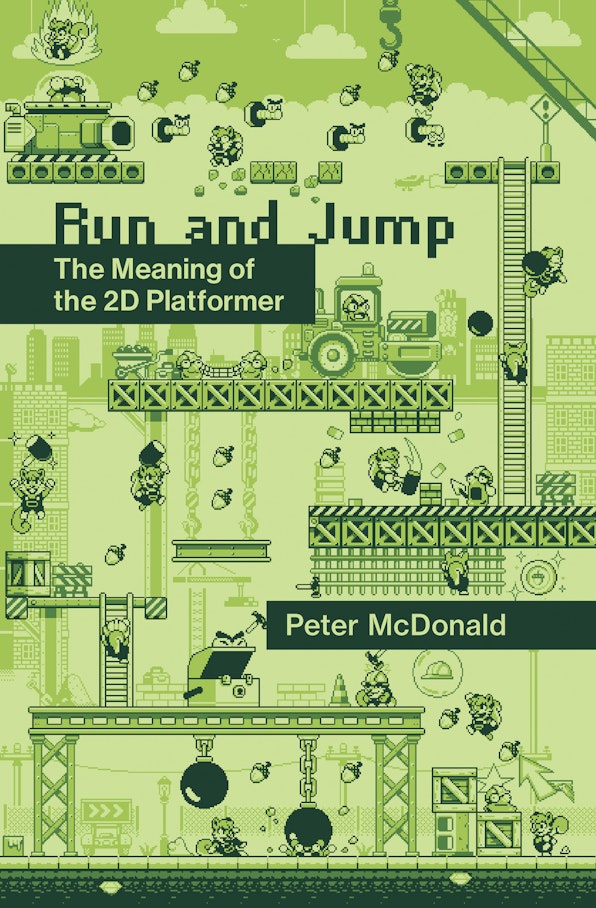
Paperback $35.00 |
|||
The Beauty of Gamesby Frank Lantz How games create beauty and meaning, and how we can use them to explore the aesthetics of thought. Are games art? This question is a dominant mode of thinking about games and play in the twenty-first century, but it is fundamentally the wrong question. Instead, Frank Lantz proposes in his provocative new book, The Beauty of Games, that we think about games and how they create meaning through the lens of the aesthetic. We should think of games, he writes, the same way we think of literature, theater, or music – as a form that ranges from deep and profound to easy and disposable, and everything in between. Games are the aesthetic form of interactive systems, a set of possibilities connected by rules of cause and effect. In this book, Lantz analyzes games from chess to poker to tennis to understand how games create beauty and evoke a deeper meaning. He suggests that we think of games not only as hyper-modern objects but also as forms within the ancient context of artistic production, encompassing all of the nebulous and ephemeral qualities of the aesthetic experience. About the Author |
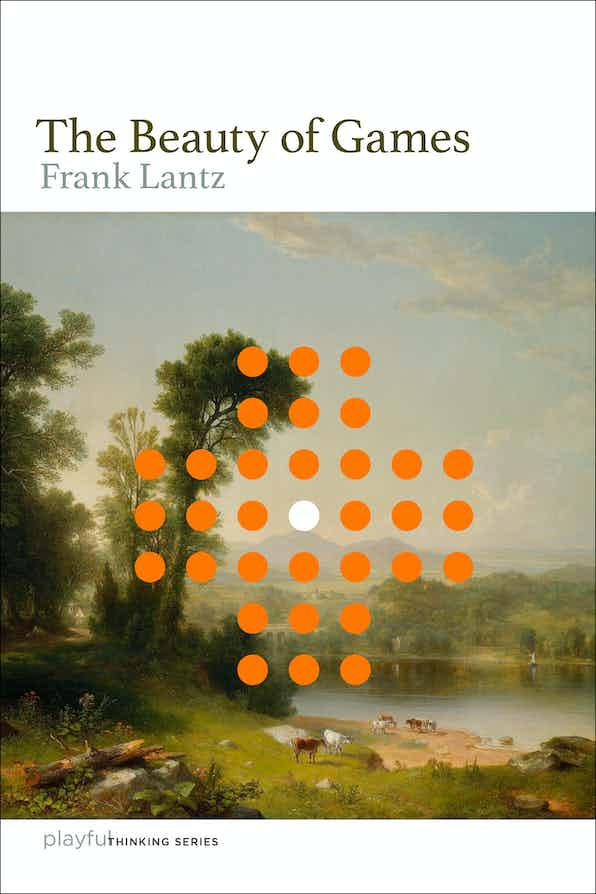
Hardcover $25.00 |
|||
Mainstreaming and Game Journalismby David B. Nieborg and Maxwell Foxman Why games are still niche and not mainstream, and how journalism can help them gain cultural credibility. Mainstreaming and Game Journalism addresses both the history and current practice of game journalism, along with the roles writers and industry play in conveying that the medium is a "mainstream" form of entertainment. Through interviews with reporters, David B. Nieborg and Maxwell Foxman retrace how the game industry and journalists started a subcultural spiral in the 1980s that continues to this day. Digital play became increasingly exclusionary by appealing to niche audiences, relying on hardcore fans and favoring the male gamer stereotype. At the same time, this culture pushed journalists to the margins, leaving them toiling to find freelance gigs and deeply ambivalent about their profession. Mainstreaming and Game Journalism also examines the bumpy process of what we think of as "mainstreaming." The authors argue that it encompasses three overlapping factors. First, for games to become mainstream, they need to become more ubiquitous through broader media coverage. Second, an increase in ludic literacy, or how-to play games, determines whether that greater visibility translates into accessibility. Third, the mainstreaming of games must gain cultural legitimacy. The fact that games are more visible does little if only a few people take them seriously or deem them worthy of attention. Ultimately, Mainstreaming and Game Journalism provocatively questions whether games ever will – or even should – gain widespread cultural acceptance. About the Authors Maxwell Foxman is Assistant Professor of Media Studies and Game Studies at the School of Journalism and Communication at the University of Oregon. |
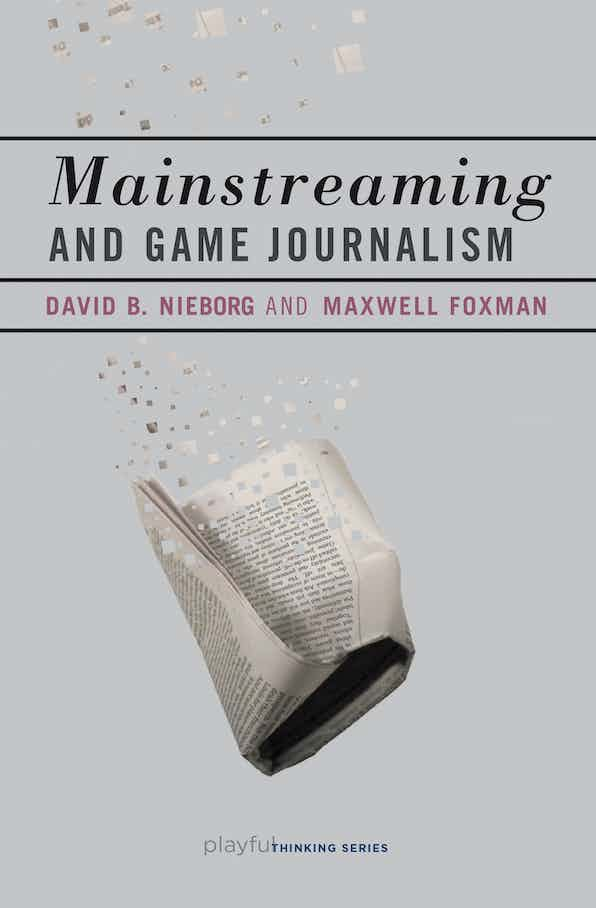
Paperback $30 |
|||
The Stuff Games are Made Ofby Pippin Barr A deep dive into practical game design through playful philosophy and philosophical play. What are video games made of? And what can that tell us about what they mean? In The Stuff Games Are Made Of, experimental game maker Pippin Barr explores the materials of video game design. Taking the reader on a deep dive into eight case studies of his own games, Barr illuminates the complex nature of video games and video game design, and the possibilities both offer for exploring ideas big and small. Through a variety of engaging and approachable examples, Barr shows how every single aspect of a game – whether it is code, graphics, interface, or even time itself – can be designed with and related to the player experience. Barr's experimental approach, with its emphasis on highly specific elements of games, will leave readers armed with intriguing design philosophy, conceptual rigor, and diverse insights into the inner life of video games. Upon finishing this book, readers will be ready to think deeply about the nature of games, to dive into expressive and experimental game design themselves, or simply to play with a new and expanded mindset. About the Author |

Paperback $30.00 |
|||
Repairing Play: a Black Phenomenologyby Aaron Trammell A provocative study that reconsiders our notion of play – and how its deceptively wholesome image has harmed and erased people of color. Contemporary theorists present play as something wholly constructive and positive. But this broken definition is drawn from a White European philosophical tradition that ignores the fact that play can, and often does, hurt. In fact, this narrow understanding of play has been complicit in the systemic erasure of Black, Indigenous, and People of Color (BIPOC) from the domain of leisure. In this book, Aaron Trammell proposes a corrective: a radical reconsideration of play that expands its definition to include BIPOC suffering, subjugation, and taboo topics such as torture. As he challenges and decolonizes White European thought, Trammell maps possible ways to reconcile existing theories with the fact that play is often hurtful and toxic. Trammell upends current notions by exploring play's function as a tool in the subjugation of BIPOC. As he shows, the phenomenology of play is a power relationship. Even in innocent play, human beings subtly discipline each other to remain within unspoken rules. Going further, Trammell departs from mainstream theory to insist that torture can be play. Approaching it as such reveals play's role in subjugating people in general and renders visible the long-ignored experiences of BIPOC. Such an inclusive definition of play becomes a form of intellectual reparation, correcting the notion that play must give pleasure while also recasting play in a form that focuses on the deep, painful, and sometimes traumatic depths of living. About the Author |
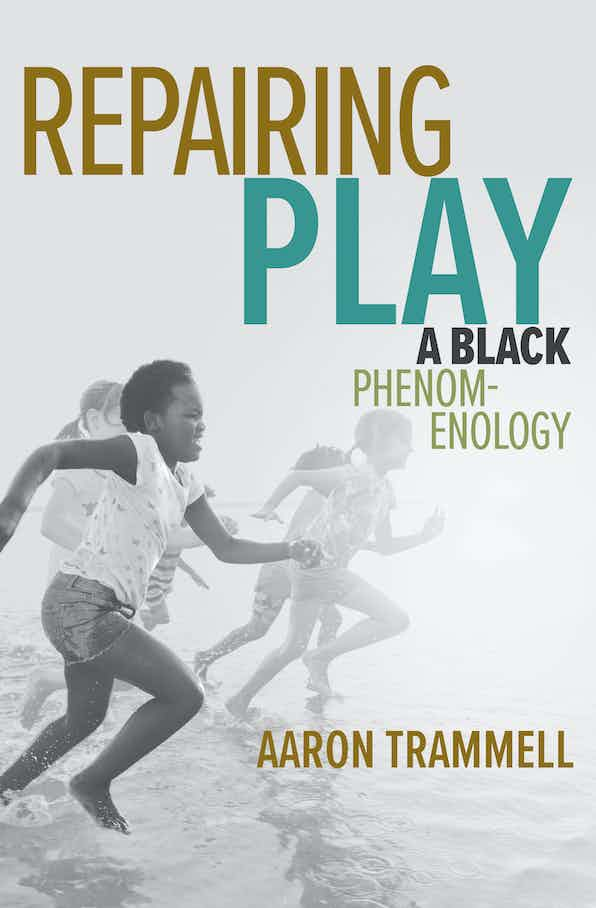
Paperback $20.00 |
|||
Player vs. Monster: The Making and Breaking of Video Game Monstrosityby Jaroslav Švelch A study of the gruesome game characters we love to beat – and what they tell us about ourselves. Since the early days of video games, monsters have played pivotal roles as dangers to be avoided, level bosses to be defeated, or targets to be destroyed for extra points. But why is the figure of the monster so important in gaming, and how have video games come to shape our culture's conceptions of monstrosity? To answer these questions, Player vs. Monster explores the past half-century of monsters in games, from the dragons of early tabletop role-playing games and the pixelated aliens of Space Invaders to the malformed mutants of The Last of Us and the bizarre beasts of Bloodborne, and reveals the common threads among them. Covering examples from aliens to zombies, Jaroslav Švelch explores the art of monster design and traces its influences from mythology, visual arts, popular culture, and tabletop role-playing games. At the same time, he shows that video games follow the Cold War-era notion of clearly defined, calculable enemies, portraying monsters as figures that are irredeemably evil yet invariably vulnerable to defeat. He explains the appeal of such simplistic video game monsters, but also explores how the medium could evolve to present more nuanced depictions of monstrosity. About the Author |
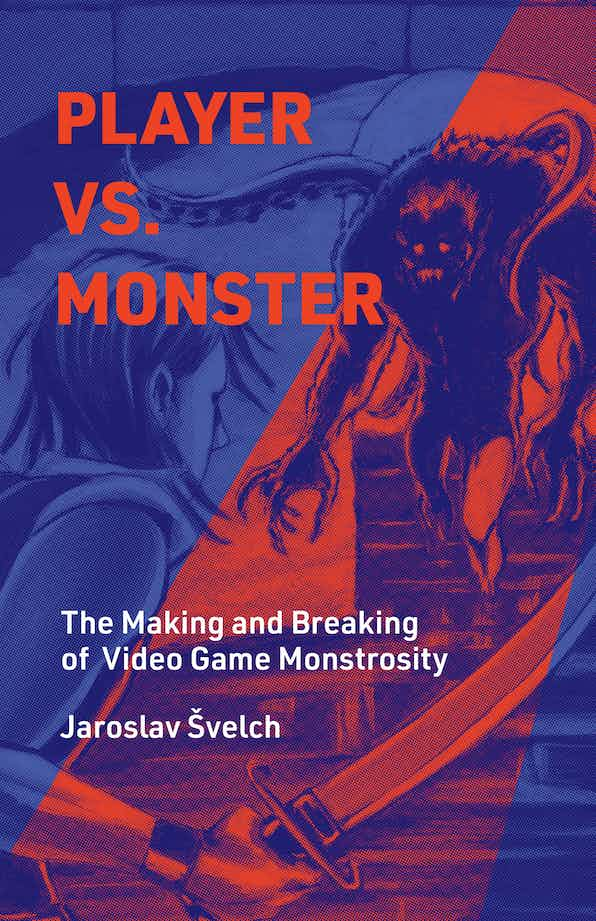
Hardcover $26.95 |
|||
Treacherous Playby Marcus Carter The ethics and experience of "treacherous play": an exploration of three games that allow deception and betrayal, EVE Online, DayZ, and Survivor. Deception and betrayal in gameplay are generally considered off-limits, designed out of most multiplayer games. There are a few games, however, in which deception and betrayal are allowed, and even encouraged. In Treacherous Play, Marcus Carter explores the ethics and experience of playing such games, offering detailed explorations of three games in which this kind of "dark play" is both lawful and advantageous: EVE Online, DayZ, and the television series Survivor. Examining aspects of games that are often hidden, ignored, or designed away, Carter shows the appeal of playing treacherously. Carter looks at EVE Online's notorious scammers and spies, drawing on his own extensive studies of them, and describes how treacherous play makes EVE successful. Making a distinction between treacherous play and griefing or trolling, he examines the experiences of DayZ players to show how negative experiences can be positive in games, and a core part of their appeal. And he explains how in Survivor's tribal council votes, a player's acts of betrayal can exact a cost. Then, considering these games in terms of their design, he discusses how to design for treacherous play. Carter's account challenges the common assumptions that treacherous play is unethical, antisocial, and engaged in by bad people. He doesn't claim that more games should feature treachery, but that examining this kind of play sheds new light on what play can be. About the Author |
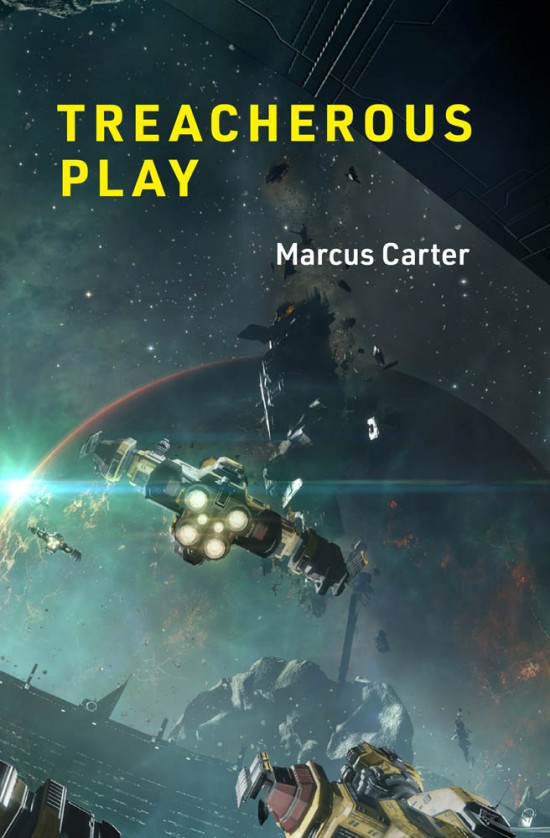
Hardcover $25.00 |
|||
Making Gamesby Stefan Werning An argument that production tools shape the aesthetics and political economy of games as an expressive medium. In Making Games, Stefan Werning considers the role of tools (primarily but not exclusively software), their design affordances, and the role they play as sociotechnical actors. Drawing on a wide variety of case studies, Werning argues that production tools shape the aesthetics and political economy of games as an expressive medium. He frames game-making as a (meta)game in itself and shows that tools, like games, have their own "procedural rhetoric" and should not always be conceived simply in terms of optimization and best practices. Considering tools conceptually rather than examining the function of particular tools, Werning offers a new way to think about game development. He employs an expansive definition of tools, outlining four characteristics: tool use occurs all across the value chain of the digital games industry, not just in game creation; tools are manipulatable and shareable objects; tools shape the relationships between different stakeholders; and tools meaningfully frame the purpose for which they are intended. Werning develops this theoretical framework through a series of "tool essays" that reaffirm the direct connection between playing and making games, covering such topics as metaphors of control, tool fandom, playful appropriation of tools, worldbuilding, and the subversive use of character customization tools. Finally, he calls for evocative tool design, envisioning games not just as products but as a form of expression and reflection. About the Author |
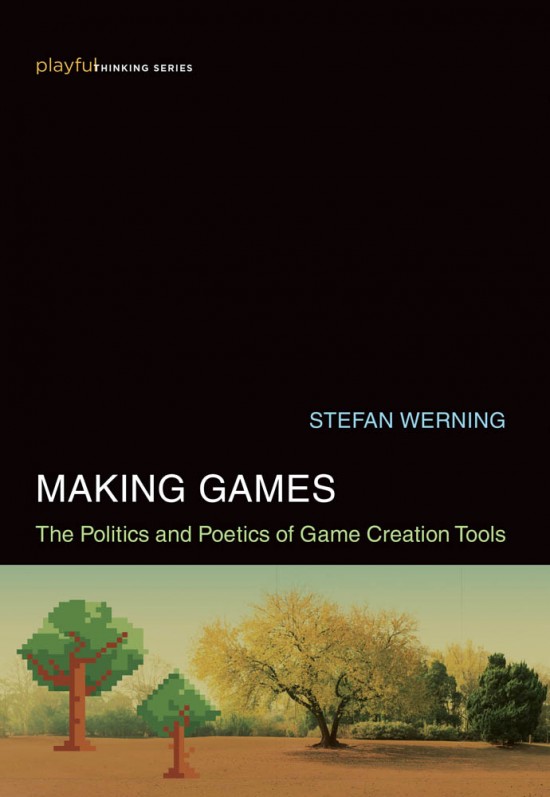
Hardcover $25.00 |
|||
Ambient Playby Larissa Hjorth and Ingrid Richardson How mobile games are part of our day-to-day lives and the ways we interact across digital, material, and social landscapes. We often play games on our mobile devices when we have some time to kill ¶#150; waiting in line, pausing between tasks, stuck on a bus. We play in solitude or in company, alone in a bedroom or with others in the family room. In Ambient Play, Larissa Hjorth and Ingrid Richardson examine how mobile gameplay fits into our day-to-day lives. They show that as mobile games spread across different genres, platforms, practices, and contexts, they become an important way of experiencing and navigating a digitally saturated world. Mobile games become conduits for what the authors call ambient play, pervading much of our social and communicative terrain. We become digital wayfarers, moving constantly among digital, materiall, and social worlds. Hjorth and Richardson explore how households are transformed by media – how idiosyncratic media use can alter the spatial composition and emotional cadence of the home. They show how mobile games connect domestic forms of play with more public forms of playfulness in urban spaces, how collaborative play (both networked and face-to-face) is incorporated into private and public play, and how touchscreens and haptic play emphasize the perception of the moving body. Hjorth and Richardson invite us to think of mobile gaming as more than a "casual" distraction but as a complex cultural practice embedded into our contemporary ways of being, knowing, and communicating. About the Authors |
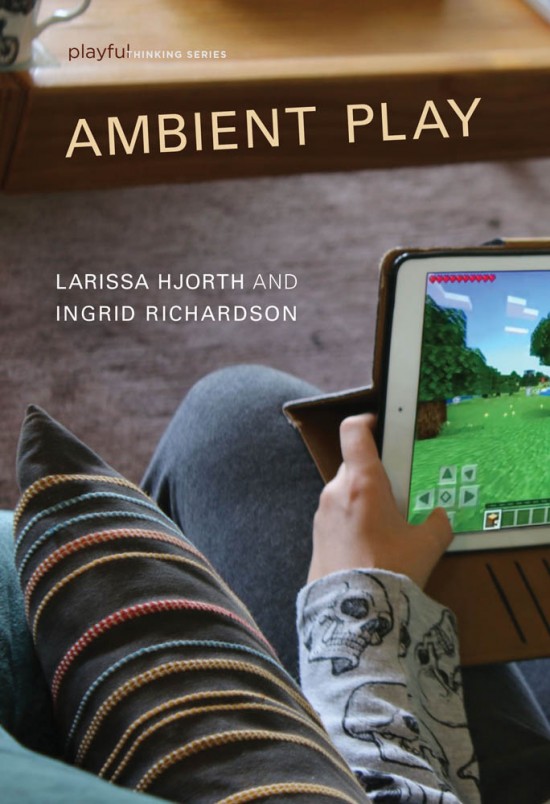
Hardcover $21.95 |
|||
Play like a Feminist.by Shira Chess Why video games need feminism and feminism needs video games. "You play like a girl": it's meant to be an insult, accusing a player of subpar, un-fun playing. If you're a girl, and you grow up, do you "play like a woman" – whatever that means? In this provocative and enlightening book, Shira Chess urges us to play like feminists. Furthermore, she urges us to play video games like feminists. Playing like a feminist is empowering and disruptive; it exceeds the boundaries of gender yet still advocates for gender equality. Playing like a feminist offers a new way to think about how humans play – and also a new way to think about how feminists do their feministing. Chess argues that feminism needs video games as much as video games need feminism. Video games, Chess tells us, are primed for change. Roughly half of all players identify as female, and Gamergate galvanized many of gaming's disenfranchised voices. Games themselves are in need of a creative platform-expanding, metaphysical explosion; feminism can make games better. Chess reflects on the importance of play, and playful protest, and how feminist video games can help us rethink the ways that we tell stories. She proposes "Women's Gaming Circles" – which would function like book clubs for gaming – as a way for feminists to take back play. (An appendix offers a blueprint for organizing a gaming circle.) Play and games can be powerful. Chess's goal is for all of us – regardless of gender orientation, ethnicity, ability, social class, or stance toward feminism – to spend more time playing as a tool of radical disruption. About the Author |
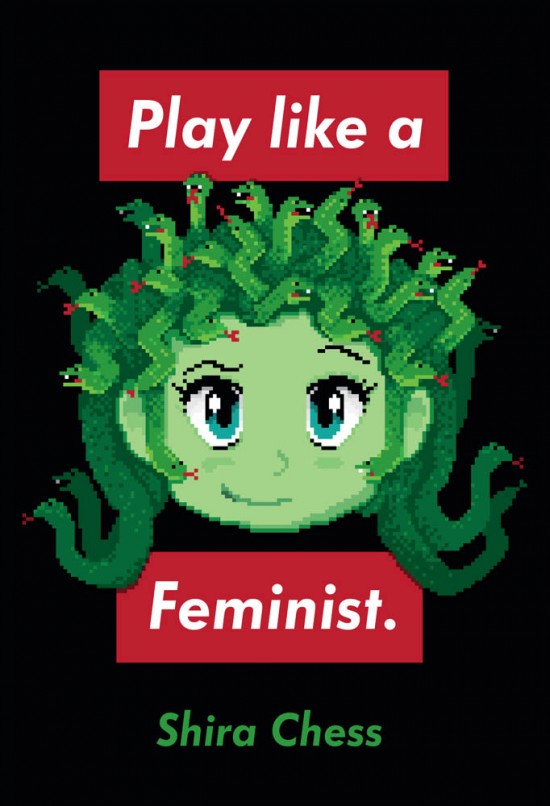
Hardcover: $26.95 |
|||
Achievement Relocked: Loss Aversion and Game Designby Geoffrey Engelstein Getting something makes you feel good, and losing something makes you feel bad. But losing something makes you feel worse than getting the same thing makes you feel good. So finding $10 is a thrill; losing $10 is a tragedy. On an "intensity of feeling" scale, loss is more intense than gain. This is the core psychological concept of loss aversion, and in this book game creator Geoffrey Engelstein explains, with examples from both tabletop and video games, how it can be a tool in game design. Loss aversion is a profound aspect of human psychology, and directly relevant to game design; it is a tool the game designer can use to elicit particular emotions in players. Engelstein connects the psychology of loss aversion to a range of phenomena related to games, exploring, for example, the endowment effect – why, when an object is ours, it gains value over an equivalent object that is not ours – as seen in the Weighted Companion Cube in the game Portal; the framing of gains and losses to manipulate player emotions; Deal or No Deal's use of the utility theory; and regret and competence as motivations, seen in the context of legacy games. Finally, Engelstein examines the approach to Loss Aversion in three games by Uwe Rosenberg, charting the designer's increasing mastery. About the Author |
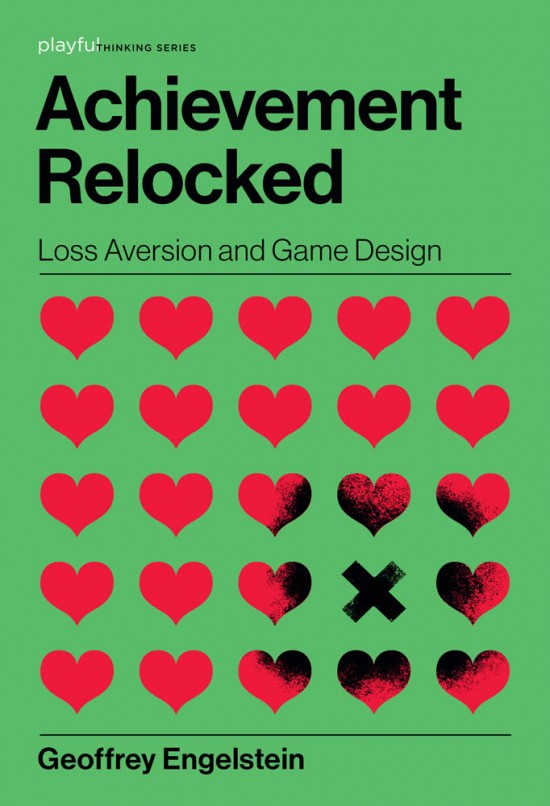
Hardcover: $30.00 | £25.00 |
|||
Real Games: What's Legitimate and What's Not in Contemporary Videogamesby Mia Consalvo and Christopher A. Paul In videogame criticism, the worst insult might be "That's not a real game!" For example, "That's not a real game, it's on Facebook!" and "That's not a real game, it's a walking simulator!" But how do people judge what is a real game and what is not – what features establish a game's gameness? In this engaging book, Mia Consalvo and Christopher Paul examine the debates about the realness or not-realness of videogames and find that these discussions shape what games get made and who is invited to play them. Consalvo and Paul look at three main areas often viewed as determining a game's legitimacy: the game's pedigree (its developer), the content of the game itself, and the game's payment structure. They find, among other things, that even developers with a track record are viewed with suspicion if their games are on suspect platforms. They investigate game elements that are potentially troublesome for a game's gameness, including genres, visual aesthetics, platform, and perceived difficulty. And they explore payment models, particularly free-to-play – held by some to be a marker of illegitimacy. Finally, they examine the debate around such so-called walking simulators as Dear Esther and Gone Home. And finally, they consider what purpose is served by labeling certain games "real." About the Authors Christopher A. Paul is Associate Professor of Communication and Chair of the Department of Communication at Seattle University. He is the author of Wordplay and the Discourse of Video Games and The Toxic Meritocracy of Video Games. |
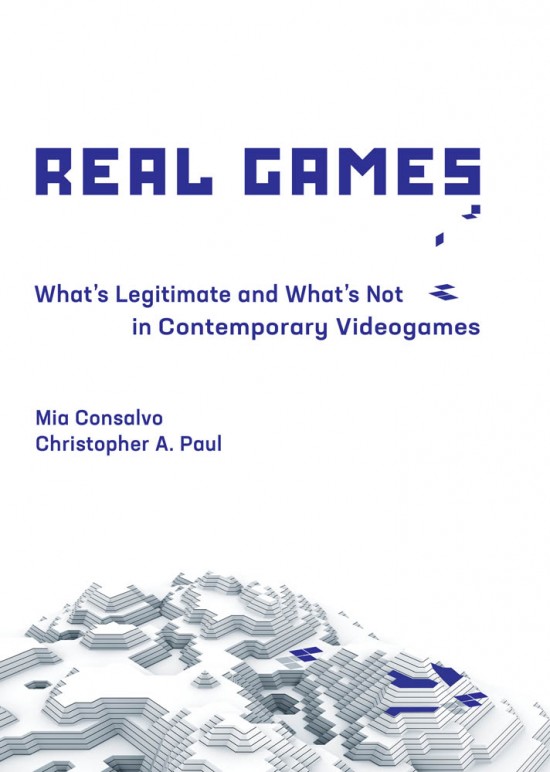
Hardcover: $30.00 | £25.00 |
|||
Fun, Taste, & Games: An Aesthetics of the Idle, Unproductive, and Otherwise Playfulby John Sharp and David Thomas "Fun" is somewhat ambiguous. If something is fun, is it pleasant? Entertaining? Silly? A way to trick students into learning? Fun also has baggage – it seems inconsequential, embarrassing, child's play. In Fun, Taste, & Games, John Sharp and David Thomas reclaim fun as a productive and meaningful tool for understanding and appreciating play and games. They position fun at the heart of the aesthetics of games. As beauty was to art, they argue, fun is to play and games – the aesthetic goal that we measure our experiences and interpretations against. Sharp and Thomas use this fun-centered aesthetic framework to explore a range of games and game issues – from workplace bingo to Meow Wolf, from basketball to Myst, from the consumer marketplace to Marcel Duchamp. They begin by outlining three elements for understanding the drive, creation, and experience of fun: set-outsideness, ludic forms, and ambiguity. Moving from theory to practice and back again, they explore the complicated relationships among the titular fun, taste, and games. They consider, among other things, the dismissal of fun by game journalists and designers; the seminal but underinfluential game Myst, and how tastes change over time; the shattering of the gamer community in Gamergate; and an aesthetics of play that goes beyond games. About the Authors David Thomas is Assistant Professor in the College of Architecture and Planning at the University of Colorado Denver. A former game journalist, he runs the website Buzzcut.com. |
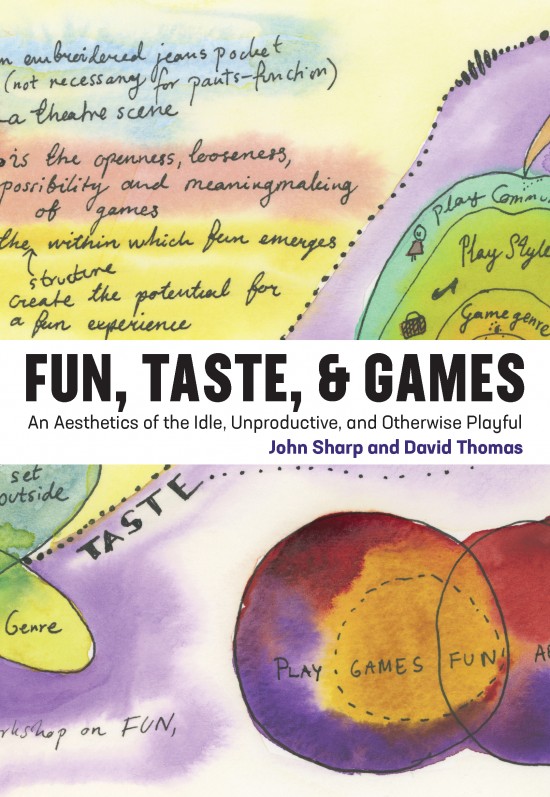
Hardcover: $27.95 |
|||
Playing Smart: On Games, Intelligence, and Artificial Intelligenceby Julian Togelius Can games measure intelligence? How will artificial intelligence inform games of the future? In Playing Smart, Julian Togelius explores the connections between games and intelligence to offer a new vision of future games and game design. Video games already depend on AI. We use games to test AI algorithms, challenge our thinking, and better understand both natural and artificial intelligence. In the future, Togelius argues, game designers will be able to create smarter games that make us smarter in turn, applying advanced AI to help design games. In this book, he tells us how. Games are the past, present, and future of artificial intelligence. In 1948, Alan Turing, one of the founding fathers of computer science and artificial intelligence, handwrote a program for chess. Today we have IBM's Deep Blue and DeepMind's AlphaGo, and huge efforts go into developing AI that can play such arcade games as Pac-Man. Programmers continue to use games to test and develop AI, creating new benchmarks for AI while also challenging human assumptions and cognitive abilities. Game design is at heart a cognitive science, Togelius reminds us – when we play or design a game, we plan, think spatially, make predictions, move, and assess ourselves and our performance. By studying how we play and design games, Togelius writes, we can better understand how humans and machines think. AI can do more for game design than providing a skillful opponent. We can harness it to build game-playing and game-designing AI agents, enabling a new generation of AI-augmented games. With AI, we can explore new frontiers in learning and play. About the Author |
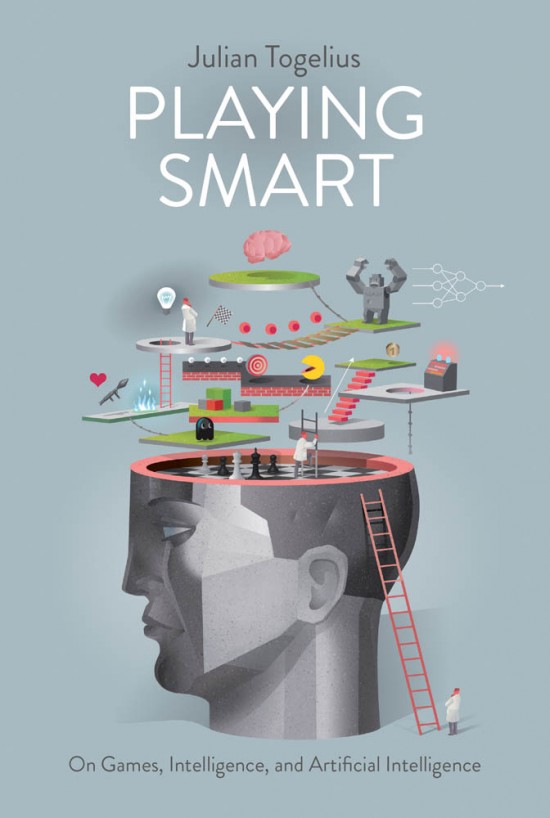
Hardcover: $21.95 |
|||
How Games Move Us: Emotion by Designby Katherine Isbister This is a renaissance moment for video games – in the variety of genres they represent, and the range of emotional territory they cover. But how do games create emotion? In How Games Move Us, Katherine Isbister takes the reader on a timely and novel exploration of the design techniques that evoke strong emotions for players. She counters arguments that games are creating a generation of isolated, emotionally numb, antisocial loners. Games, Isbister shows us, can actually play a powerful role in creating empathy and other strong, positive emotional experiences; they reveal these qualities over time, through the act of playing. She offers a nuanced, systematic examination of exactly how games can influence emotion and social connection, with examples – drawn from popular, indie, and art games – that unpack the gamer's experience. Isbister describes choice and flow, two qualities that distinguish games from other media, and explains how game developers build upon these qualities using avatars, non-player characters, and character customization, in both solo and social play. She shows how designers use physical movement to enhance players' emotional experience, and examines long-distance networked play. She illustrates the use of these design methods with examples that range from Sony's Little Big Planet to the much-praised indie game Journey to art games like Brenda Romero's Train. Isbister's analysis shows us a new way to think about games, helping us appreciate them as an innovative and powerful medium for doing what film, literature, and other creative media do: helping us to understand ourselves and what it means to be human. About the Author |
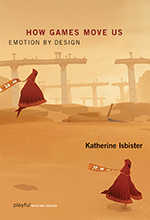
Hardcover: $24.95
Ebook: $17.95 |
|||
Works of Game: On the Aesthetics of Games and Artby John Sharp Games and art have intersected at least since the early twentieth century, as can be seen in the Surrealists' use of Exquisite Corpse and other games, Duchamp's obsession with Chess, and Fluxus event scores and boxes–to name just a few examples. Over the past fifteen years, the synthesis of art and games has clouded for both artists and gamemakers. Contemporary art has drawn on the tool set of videogames, but has not considered them a cultural form with its own conceptual, formal, and experiential affordances. For their part, game developers and players focus on the innate properties of games and the experiences they provide, giving little attention to what it means to create and evaluate fine art. In Works of Game, John Sharp bridges this gap, offering a formal aesthetics of games that encompasses the commonalities and the differences between games and art.
Sharp describes three communities of practice and offers case studies for each. "Game Art," which includes such artists as Julian Oliver, Cory Arcangel, and JODI (Joan Heemskerk and Dirk Paesmans) treats videogames as a form of popular culture from which can be borrowed subject matter, tools, and processes. "Artgames," created by gamemakers including Jason Rohrer, Brenda Romero, and Jonathan Blow, explore territory usually occupied by poetry, painting, literature, or film. Finally, "Artists' Games"–with artists including Blast Theory, Mary Flanagan, and the collaboration of Nathalie Pozzi and Eric Zimmerman–represents a more synthetic conception of games as an artistic medium. The work of these gamemakers, Sharp suggests, shows that it is possible to create game-based artworks that satisfy the aesthetic and critical values of both the contemporary art and game communities. About the Author Endorsements "With Works of Game, John Sharp has written the fundamental reference for understanding the relation between game design and artistic practice. This book challenges our notions of the arts and games, and proposes new ways of thinking about and understanding game design as an artistic practice. For game designers, game scholars, and artists, Works of Game is a must-read." – Miguel Sicart, Associate Professor, Center for Computer Games Research, IT University of Copenhagen; author of Play Matters "This book will be of great value to all contemporary creative practitioners, whether they consider themselves artists, game designers, or some combination of the two. Not only does the book provide a strong overview of contemporary projects that walk the line between art-works and game-works, it also constructs a highly useful set of diagnostic terms that will aid us in understanding hybrid projects in the years to come." – Ted Purves, Associate Professor of Social Practice, California College of the Arts; coeditor of What We Want Is Free: Critical Exchanges in Recent Art, second edition "Rather than asking the naive, popular question–can games be art?–John Sharp answers a more interesting one: where do games and the art world meet, and what do they talk about when they do?" – Ian Bogost, Ivan Allen College Distinguished Chair in Media Studies and Professor of Interactive Computing, Georgia Institute of Technology |
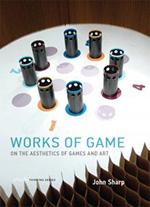
Hardcover: $19.95 |
|||
Play Mattersby Miguel Sicart What do we think about when we think about play? A pastime? Games? Childish activities? The opposite of work? Think again: If we are happy and well rested, we may approach even our daily tasks in a playful way, taking the attitude of play without the activity of play. So what, then, is play? In Play Matters, Miguel Sicart argues that to play is to be in the world; playing is a form of understanding what surrounds us and a way of engaging with others. Play goes beyond games; it is a mode of being human. We play games, but we also play with toys, on playgrounds, with technologies and design. Sicart proposes a theory of play that doesn't derive from a particular object or activity but is a portable tool for being--not tied to objects but brought by people to the complex interactions that form their daily lives. It is not separated from reality; it is part of it. It is pleasurable, but not necessarily fun. Play can be dangerous, addictive, and destructive. Along the way, Sicart considers playfulness, the capacity to use play outside the context of play; toys, the materialization of play – instruments but also play pals; playgrounds, play spaces that enable all kinds of play; beauty, the aesthetics of play through action; political play – from Maradona's goal against England in the 1986 World Cup to the hactivist activities of Anonymous; the political, aesthetic, and moral activity of game design; and why play and computers get along so well. About the Author Endorsements "Play is undoubtedly the most important part of any creative process; in fact it is the creative process. Miguel Sicart shows time and time again why play is something that must be taken seriously, why it leads to better, more beautiful, more considered work, and ultimately why play does indeed matter." - Brendan Dawes, designer, brendandawes.com "In Play Matters, Sicart shares with us a fascinating toy chest full of concepts, ideas, and observations on the most elusive subject in game studies." - Gonzalo Frasca, ORT University Uruguay |
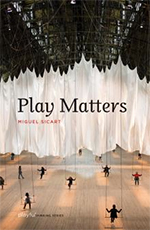
Hardcover: $19.95 |
|||
Uncertainty in Gamesby Greg Costikyan In life, uncertainty surrounds us. Things that we thought were good for us turn out to be bad for us (and vice versa); people we thought we knew well behave in mysterious ways; the stock market takes a nosedive. Thanks to an inexplicable optimism, most of the time we are fairly cheerful about it all. But we do devote much effort to managing and ameliorating uncertainty. Is it any wonder, then, asks Greg Costikyan, that we have taken this aspect of our lives and transformed it culturally, making a series of elaborate constructs that subject us to uncertainty but in a fictive and nonthreatening way? That is: we create games. In this concise and entertaining book, Costikyan, an award-winning game designer, argues that games require uncertainty to hold our interest, and that the struggle to master uncertainty is central to their appeal. Game designers, he suggests, can harness the idea of uncertainty to guide their work. Costikyan explores the many sources of uncertainty in many sorts of games – from Super Mario Bros. to Rock/Paper/Scissors, from Monopoly to CityVille, from FPS Deathmatch play to Chess. He describes types of uncertainty, including performative uncertainty, analytic complexity, and narrative anticipation. And he suggests ways that game designers who want to craft novel game experiences can use an understanding of game uncertainty in its many forms to improve their designs. About the Author |
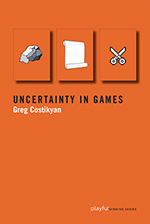
Hardcover: $19.95 |
|||
The Art of Failureby Jesper Juul We may think of video games as being "fun," but in The Art of Failure, Jesper Juul claims that this is almost entirely mistaken. When we play video games, our facial expressions are rarely those of happiness or bliss. Instead, we frown, grimace, and shout in frustration as we lose, or die, or fail to advance to the next level. Humans may have a fundamental desire to succeed and feel competent, but game players choose to engage in an activity in which they are nearly certain to fail and feel incompetent. So why do we play video games even though they make us unhappy? Juul examines this paradox. In video games, as in tragic works of art, literature, theater, and cinema, it seems that we want to experience unpleasantness even if we also dislike it. Reader or audience reaction to tragedy is often explained as catharsis, as a purging of negative emotions. But, Juul points out, this doesn't seem to be the case for video game players. Games do not purge us of unpleasant emotions; they produce them in the first place. What, then, does failure in video game playing do? Juul argues that failure in a game is unique in that when you fail in a game, you (not a character) are in some way inadequate. Yet games also motivate us to play more, in order to escape that inadequacy, and the feeling of escaping failure (often by improving skills) is a central enjoyment of games. Games, writes Juul, are the art of failure: the singular art form that sets us up for failure and allows us to experience it and experiment with it. The Art of Failure is essential reading for anyone interested in video games, whether as entertainment, art, or education. About the Author |
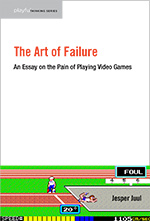
Hardcover: $19.95 |
|||
SubmissionsThe editors are currently accepting book proposals. The proposal submission process is as follows:
To begin the proposal process, please contact the editors at proposals AT playfulthinking DOT net. |
||||
Series Editors |
||||
|
|
Mia ConsalvoDr. Mia Consalvo is Professor and Canada Research Chair in Game Studies and Design at Concordia University in Montreal. She is the co-author of Real Games: What's Legitimate and What's Not in Contemporary Videogames (2019) and Players and their Pets: Gaming Communities from Beta to Sunset (2015). She is also co-editor of Sports Videogames (2013) and the Handbook of Internet Studies (2011), and is the author of Cheating: Gaining Advantage in Videogames (2007) as well as Atari to Zelda: Japan's Videogames in Global Context (2016). Mia runs the mLab, a space dedicated to developing innovative methods for studying games and game players. She's a member of the Centre for Technoculture, Art & Games (TAG), she has presented her work at industry as well as academic conferences including regular presentations at the Game Developers Conference. She is the Past President of the Digital Games Research Association, and has held positions at MIT, Ohio University, Chubu University in Japan and the University of Wisconsin-Milwaukee. |
|||
|
|
Jesper JuulJesper Juul is Associate Professor at the Royal Danish Academy. He has previously taught at MIT and New York University. He is the author of Half-Real: Video Games between Real Rules and Fictional Worlds (2011), A Casual Revolution: Reinventing Video Games and Their Players (2012), The Art of Failure: An Essay on the Pain of Playing Video Games (2016), and Handmade Pixels: Independent Video Games and the Quest for Authenticity (2019), all published by the MIT Press. |
|||
|
|
Geoffrey LongGeoffrey Long is a storyteller, scholar, and consultant exploring transmedia experiences, emerging entertainment platforms and the future of entertainment. He is currently an Assistant Professor in the Department of Emerging Technology in Business and Design at Miami University of Ohio's College of Creative Arts, where he serves as Director of Miami's Games and Simulation Program and its Worldbuilding and Narrative Design Research (WNDR) Lab. In previous lives, he was a Visiting Assistant Professor in Whittier College's Digital Liberal Arts program, the Creative Director of USC's World Building Media Lab and World Building Institute, the Creative Director and a Research Fellow at USC's Annenberg Innovation Lab, a cofounder of the Narrative Design Team at Microsoft Studios and a member of Microsoft's "future of media and entertainment" think tank Pioneer Studios. As a scholar or a consultant, Geoff has worked with Amazon Studios, BET, Cisco, the City of Los Angeles, DirecTV, Fidelity, FOX, Havas, HBO, IBM, Intel, the Los Angeles Times, MTV, Turner Broadcasting, Walt Disney Imagineering and Warner Bros. He holds a BA in English and Philosophy from Kenyon College, a master's in Comparative Media Studies from MIT, and a Ph.D. in Media Arts + Practice from USC's School of Cinematic Arts. |
|||
Emeritus Editor |
||||
|
|
William UricchioWilliam Uricchio is Professor and Director of the MIT Comparative Media Studies Program and Professor of Comparative Media History at Utrecht University in the Netherlands, where he considers the interplay of media technologies and cultural practices, and their role in (re-) constructing representation, knowledge and publics. He is Principal Investigator of the MIT Game Lab and of the MIT Open Documentary Lab. William was a founding editor of the series until retiring from the editorial board in 2021. |
|||



